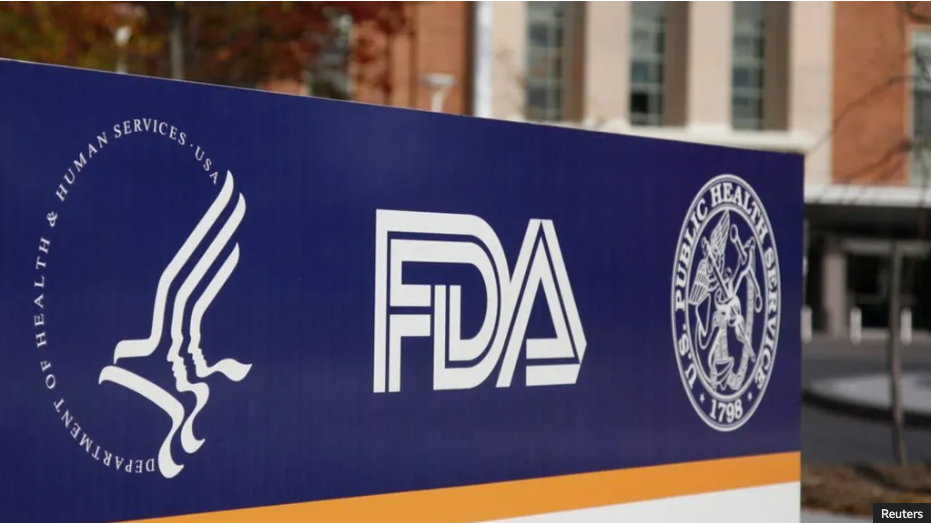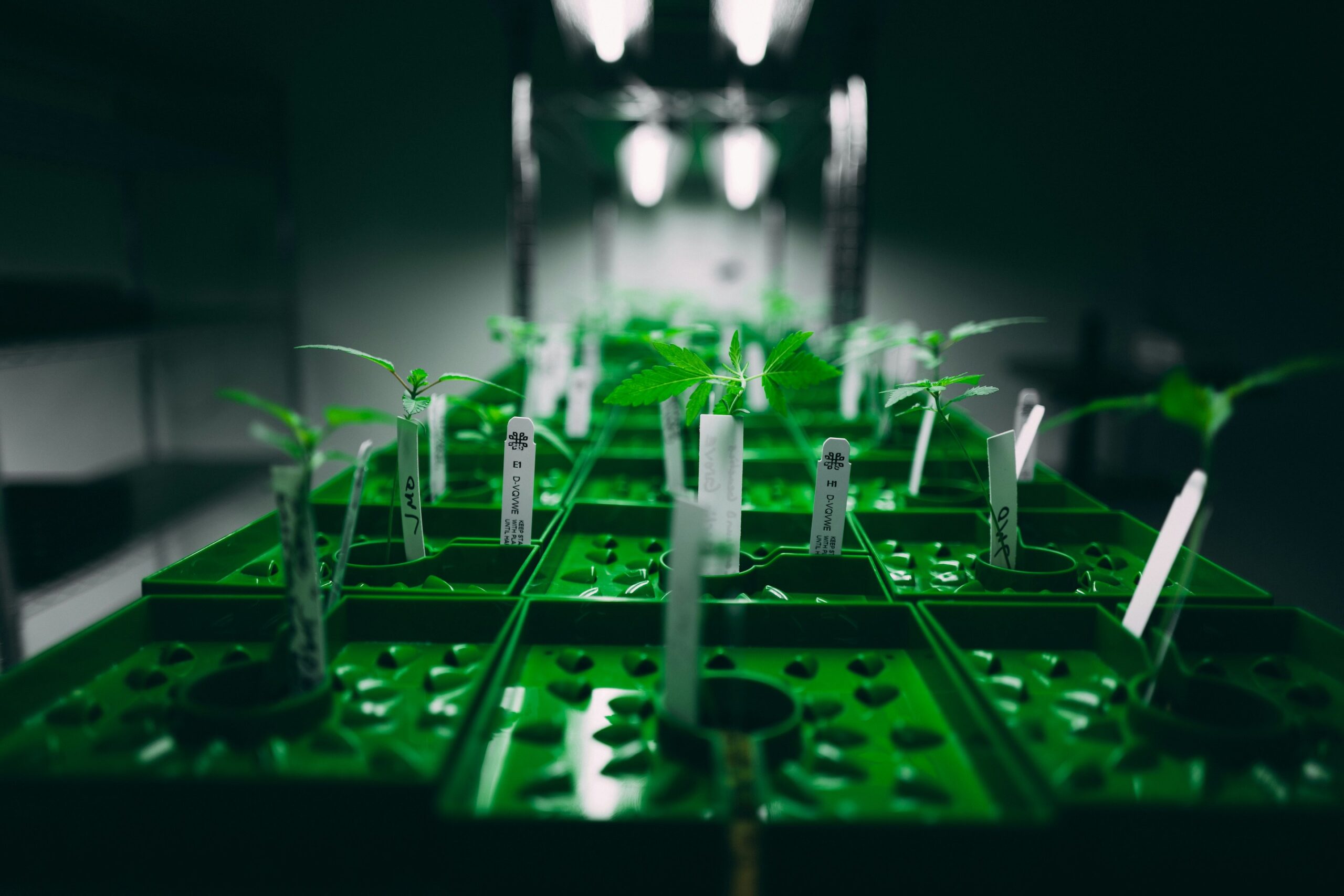Weekly Cannabis News
August 5th – August 12th, 2022
Cannabis Use & COVID-19 Symptoms Severity
COVID-19 cannabis consumers reported better clinical outcomes compared to non-consumers, suggesting the need for additional investigations.
The novel severe acute respiratory syndrome coronavirus (SARS-CoV-2) or COVID-19 is the most recent and currently occurring viral epidemic, first reported in December 2019 in Wuhan, China before spreading worldwide. [1] As of August 12th, 2022, over 500 million of cases have been identified leading to more than 6 million deaths. [2] While the FDA has authorized COVID-19 vaccines, their limited availability and the increased rate of virus mutation have led to a search for additional therapeutics which may help prevent entry of the virus. SARS-CoV-2 is expelled in respiratory droplets from an infected individual and subsequently inhaled by another non-infected individual. Common symptoms including cough, fever, respiratory distress, muscle pain, sore throat, loss of taste and/or smell, which may lead to severe illness and death. [3]
While studies have shown the detrimental effects of tobacco smoking on COVID-19 patients’ outcomes, little is known the effects of cannabis. [4] The cannabis plant contains more than 500 known compounds including phytocannabinoids, terpenes and flavonoids, with as many as 140 different phytocannabinoids present including the non-psychoactive molecule, cannabidiol (CBD) and the psychoactive molecule, ∆9-tetrahydrocannabinol (∆9-THC).
A study published in the Journal of Natural Products showed that the cannabinoid compounds cannabigerolic acid (CBGA) and cannabidiolic acid (CBDA) inhibited the SARS-CoV-2 cell entry in human cells incubated with the live SARS-CoV-2 virus and other variants. [5] Additionally, another group showed found that CBD was a potent inhibitor of SARS-CoV-2 infection as well as inhibited viral expression in human cells and reported that in a matched group of human patients, CBD usage is negatively associated with indications of SARS-CoV-2 infections in patients. [6]
To further understand how cannabis use affects COVID-19 outcomes, a group of researchers at the University of California Los Angeles, performed a retrospective analysis of 1831 patients with a COVID-19 diagnosis who were admitted at the hospital between February 12th, 2020, and February 27th, 2021. [7] As part of their analysis, they reported among others, COVID-19 severity score, need for supplemental oxygen, intensive care unit (ICU) between cannabis (4% of the cohort) and non-cannabis consumers. They found that cannabis consumers had lower inflammatory markers, better outcomes, shorter hospitalization, lower ICU admission rates compared to non-cannabis consumers. Some of the study limitations included the lower % of cannabis user in the cohort, lack of data regarding the type and the dose of phytocannabinoids and the route of administration.
The authors concluded: “In this retrospective review of 1831 COVID-19 patients requiring hospital admission, current cannabis use was associated with decreased disease severity… To our knowledge, this is the first study looking at clinical outcomes of cannabis users hospitalized with COVID-19. Further studies, including prospective analyses, will help to better understand the relationship between cannabis and COVID-19 outcomes.”
Chronic Cannabis Users in Adolescence & Changes in DNA
Cannabis use was shown to be associated with changes in genes that are linked to hippocampus-dependent learning, a new study shows.
With the increasing use of cannabis among the US population due to more states legalizing it for medicinal and recreational purposes, it is becoming critical to further understand its potential therapeutic and harmful effects. More specifically, cannabis use during adolescence may be harmful because of the neurobiological and behavioral changes that are occurring during this key period of plasticity. [8] Along those lines, reports have shown that adolescent chronic cannabis users (CCU) have verbal learning and memory impairments which may be linked to lower cognitive and academic performance. [9], [10] Changes in gene expression via environmental exposure can lead to changes in gene activation/inactivation which can further impact an individual’s phenotype; this is known as epigenetic changes. While few studies have shown that cannabis exposure can lead to epigenetic changes, the association between CCU and cognitive impairment in adolescence is poorly studies. [11],[12]
A group of researchers in Germany aimed to better understand the link between CCU and changes in DNA and determine whether there were differences in cognitive impairments, verbal learning, or attention performance. [13]
Using 18 participants (9 with CCU and 9 without), the group found that CCU adolescents had lower DNA methylation levels (an example of epigenetic change), no differences in cognitive tasks, and demonstrated lower scores in verbal learning tasks. Additionally, they identified six sites within the DNA sequences of CCU individuals located in the hippocampus, a brain region known to responsible for learning and memory. Some of the study limitations noted by the group were the low sample size, inability to record the exact time of cannabis abstinence, or the lack of causal conclusions due to the cross-sectional design of the study.
The authors concluded: “This is the first explorative analysis assessing CpG methylation in adolescent cannabis users with cannabis use disorder and linking CCU-extent associated methylation to verbal learning impairment. We showed that cannabis use was associated with CpG methylation changes of genes that have previously been associated with neurodegenerative processes and hippocampus-dependent learning.”
In-Utero Cannabis Exposure & Risks of Attention-Deficit Hyperactivity Disorder (ADHD) in Children
This study did not find any associations between in-utero cannabis exposure and the development of ADHD in children.
Despite being associated with known negative effects, cannabis use among pregnant women in on the rise in the US. [14] Nausea/vomiting and improving mood are identified as some of the common reasons to consume cannabis during pregnancy. [15]
The cannabis plant is composed of more than 100 phytocannabinoids, with ∆9-tetrahydrocannabinol (∆9-THC) and cannabidiol (CBD), the most used and investigated compounds. The offspring born to active cannabis mothers are more likely to have health consequences in later in life including increased risks for obesity or metabolic syndrome. [16],[17] Studies have shown that ∆9-THC can lead to a decrease of folic acid uptake, known to be critical to regulate embryonic development, and can alter prefrontal cortex pathways. [18], [19]Additionally, children who were exposed to cannabis in-utero may also experience increased hyperactivity and attention deficits which can impact their neuronal and behavioral development later in life. [20],[21] However, more studies are needed to investigate the effects of in-utero cannabis exposure on neurodevelopmental outcomes, specifically on the risks of developing attention-deficit hyperactivity disorder (ADHD) in children.
A combined effort from the University of Montreal and Centre Hospitalier Universtaire (CHU) Saint-Justine in Canada mailed out questionnaires to women registered at the Quebec Pregnancy Cohort (QPC) who gave birth between January 1998 and December 2003. [22] Responses regarding in-utero cannabis exposure were classified by occasionally, regularly exposed, or unexposed. From a total of 2408 children meeting the ADHD criteria diagnosis, 86 children were exposed to cannabis in-utero (62 with occasional and 24 with regular exposure), from which 12 and 5 were diagnosed with ADH in the former and in the latter group, respectively. The authors found that after adjustment analysis, there was no association found between in-utero cannabis exposure, regardless of the type, and risk of ADHD in children.
Some of the limitations for the study were the dates of surveys (1998-2003) which was relatively old considering that cannabis was legalized in Canada in 2018 and the data has probably changed or use of self-administered questionnaire which was not validated
The authors concluded: “In our study, we did not find any association between in-utero occasional or regular exposure to cannabis and the risk of ADHD in children, as well as overall exposure to cannabis and the risk of ADHD in children… Further research focusing on the timing of exposure during pregnancy (e.g., first, second, third trimester), as well as using different methods for quantifying prenatal cannabis exposure (e.g., biological samples), is needed to better understand the impact of cannabis use during pregnancy and developmental outcomes in children.”
Will Missouri Become the Next US State to Legalize Recreational Cannabis?
Voters will decide of the future of cannabis in the Show-Me State in November.
Exciting news arrived on Tuesday August 9th, 2022, as the Secretary of State Jay Ashcroft announced that the petition to legalize cannabis for recreational use had enough signature to go on the ballot on November 8th. [23] It will appear as Amendment 3. [24] If approved, this will allow adults over the age of 21 to grow and consume cannabis for personal use.
John Payne, the lead campaign manager for Legal Missouri, the campaign that pushed for legalization of recreational cannabis said the following statement: “Our statewide coalition of activists, business owners, medical marijuana patients and criminal justice reform advocates has worked tirelessly to reach this point, and deserves all the credit… That outpouring of grassroots support among Missourians who want to legalize, tax, and regulate cannabis made all the difference.” [25]
The state legalized medical cannabis in 2018 with 66% of the vote under Amendment 2. [26]
References:
[1] Zhu N, Zhang D, Wang W, et al. A Novel Coronavirus from Patients with Pneumonia in China, 2019. N Engl J Med 2020;382(8):727-733. DOI: 10.1056/NEJMoa2001017
[2] https://www.worldometers.info/coronavirus/, assessed on August 12th, 2022
[3] Lovato A, de Filippis C, Marioni G. Upper airway symptoms in coronavirus disease 2019 (COVID-19). Am J Otolaryngol 2020;41(3):102474. DOI: 10.1016/j.amjoto.2020.102474
[4] Saadatian-Elahi M, Amour S, Elias C, Henaff L, Dananche C, Vanhems P. Tobacco smoking and severity of COVID-19: Experience from a hospital-based prospective cohort study in Lyon, France. J Med Virol 2021;93(12):6822-7.
[5] van Breemen RB, Muchiri RN, Bates TA, et al. Cannabinoids Block Cellular Entry of SARS-CoV-2 and the Emerging Variants. J Nat Prod 2022. DOI: 10.1021/acs.jnatprod.1c00946
[6] Nguyen LC, Yang D, Nicolaescu V, et al. Cannabidiol Inhibits SARS-CoV-2 Replication and Promotes the Host Innate Immune Response. Sci. Adv 2022 eabi61000
[7] Shover CM, Yan P, Jackson NJ, Buhr RG, Fulcher JA, Tashkin DP, et al. Cannabis consumption is associated with lower COVID-19 severity among hospitalized patients: a retrospective cohort analysis. J Cannabis Res 2022;4(1):46.
[8] Juraska JM, Willing J. Pubertal onset as a critical transition for neural development and cognition. Brain Res 2017;1654(Pt B):87-94.
[9] Broyd SJ, van Hell HH, Beale C, Yucel M, Solowij N. Acute and Chronic Effects of Cannabinoids on Human Cognition-A Systematic Review. Biol Psychiatry 2016;79(7):557-67.
[10] Meier MH, Caspi A, Danese A, Fisher HL, Houts R, Arseneault L, et al. Associations between adolescent cannabis use and neuropsychological decline: a longitudinal co-twin control study. Addiction 2018;113(2):257-65.
[11] Schrott R, Acharya K, Itchon-Ramos N, Hawkey AB, Pippen E, Mitchell JT, et al. Cannabis use is associated with potentially heritable widespread changes in autism candidate gene DLGAP2 DNA methylation in sperm. Epigenetics 2020;15(1-2):161-73.
[12] Fuchs Weizman N, Wyse BA, Szaraz P, Defer M, Jahangiri S, Librach CL. Cannabis alters epigenetic integrity and endocannabinoid signalling in the human follicular niche. Hum Reprod 2021;36(7):1922-31.
[13] Wiedmann M, Kuitunen-Paul S, Basedow LA, Wolff M, DiDonato N, Franzen J, et al. DNA methylation changes associated with cannabis use and verbal learning performance in adolescents: an exploratory whole genome methylation study. Transl Psychiatry 2022;12(1):317.
[14] Skelton KR, Hecht AA, Benjamin-Neelon SE. Association of Recreational Cannabis Legalization With Maternal Cannabis Use in the Preconception, Prenatal, and Postpartum Periods. JAMA Netw Open 2021;4(2):e210138.
[15] Vanstone M, Taneja S, Popoola A, Panday J, Greyson D, Lennox R, et al. Reasons for cannabis use during pregnancy and lactation: a qualitative study. CMAJ 2021;193(50):E1906-E14.
[16] de Wit CC, Sas TC, Wit JM, Cutfield WS. Patterns of catch-up growth. J Pediatr. 2013;162(2):415-420
[17] Moore BF, Sauder KA, Shapiro ALB, Crume T, Kinney GL, Dabelea D. Fetal Exposure to Cannabis and Childhood Metabolic Outcomes: The Healthy Start Study. J Clin Endocrinol Metab 2022. DOI: 10.1210/clinem/dgac101.
[18] Martin GI. Marijuana: the effects on pregnancy, the fetus, and the newborn. J Perinatol 2020;40(10):1470-6.
[19] Berard A. The importance of generating more data on cannabis use in pregnancy. Nat Med 2020;26(10):1515-6.
[20] Grant KS, Petroff R, Isoherranen N, Stella N, Burbacher TM. Cannabis use during pregnancy: Pharmacokinetics and effects on child development. Pharmacol Ther 2018;182:133-51.
[21] Ayonrinde OT, Ayonrinde OA, Van Rooyen D, Tait R, Dunn M, Mehta S, et al. Association between gestational cannabis exposure and maternal, perinatal, placental, and childhood outcomes. J Dev Orig Health Dis 2021;12(5):694-703.
[22] Tchuente V, Sheehy O, Zhao JP, Gorgui J, Gomez YH, Berard A. Is in-utero exposure to cannabis associated with the risk of attention deficit with or without hyperactivity disorder? A cohort study within the Quebec Pregnancy Cohort. BMJ Open 2022;12(8):e052220.
[23] https://www.sos.mo.gov/Ashcroft-Issues-Initiative-Petition-Certificates, assessed on August 12th, 2022
[24] https://www.sos.mo.gov/CMSImages/Elections/Petitions/2022-059.pdf, assessed on August 12th, 2022
[25] https://www.marijuanamoment.net/missouri-marijuana-legalization-initiative-will-appear-on-november-ballot-state-announces/, assessed on August 12th, 2022
[26]https://ballotpedia.org/Missouri_Amendment_2,_Medical_Marijuana_and_Veteran_Healthcare_Services_Initiative_(2018), assessed on August 12th, 2022







